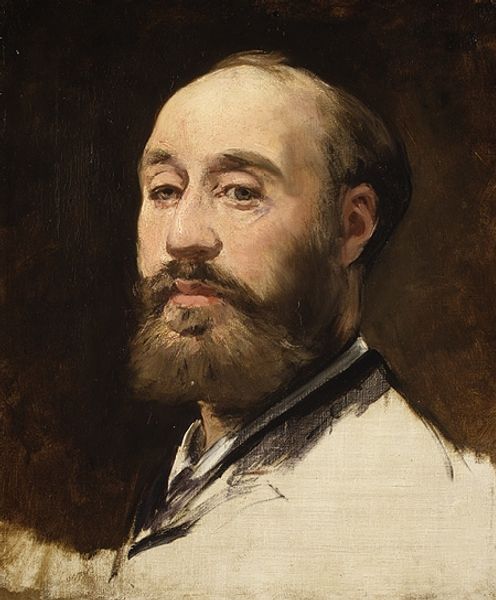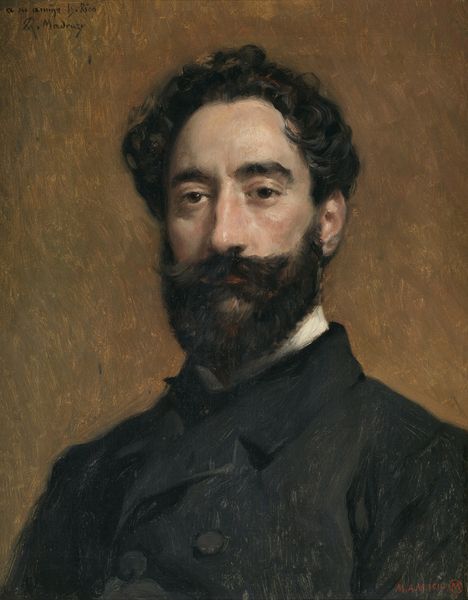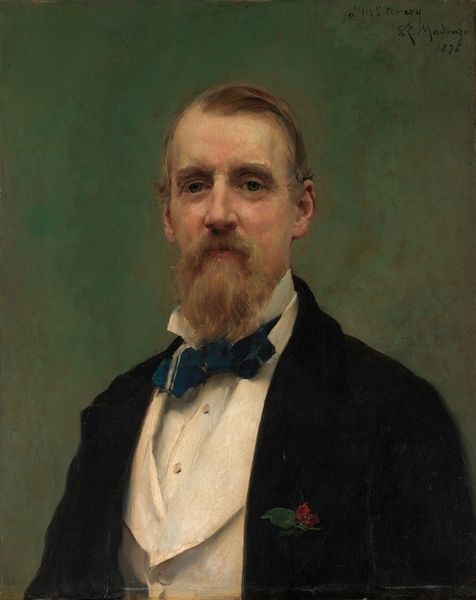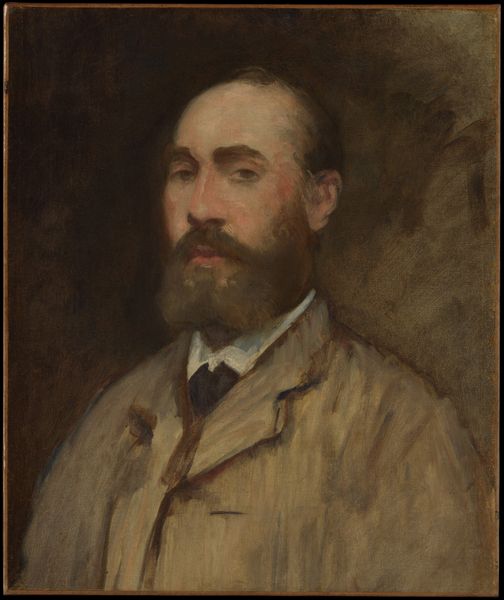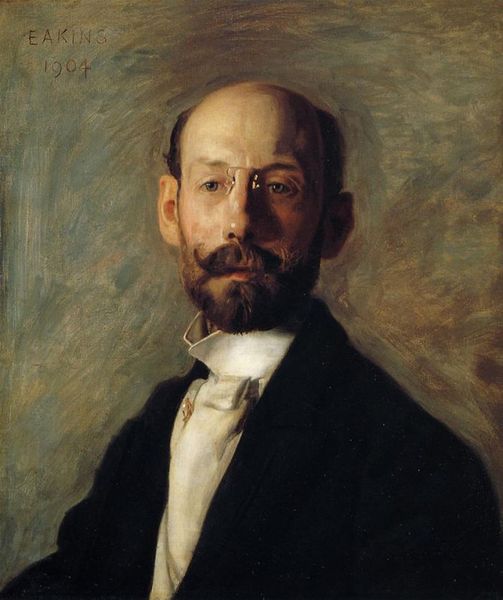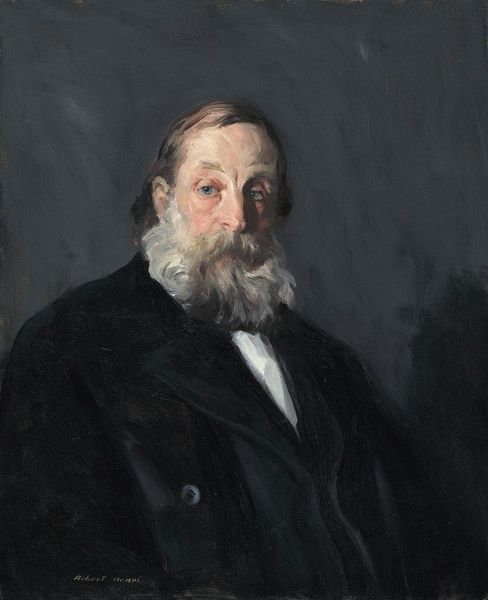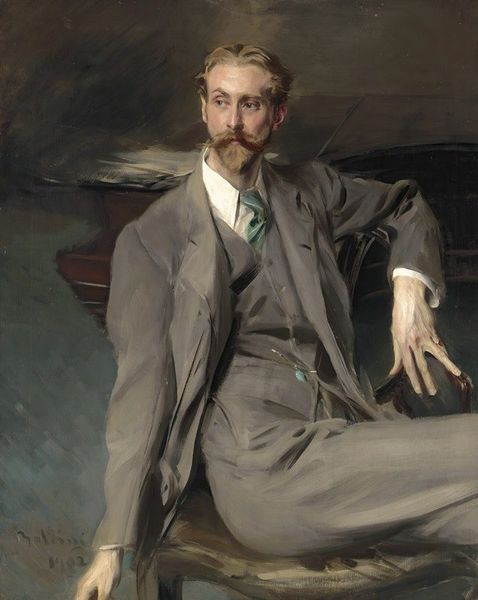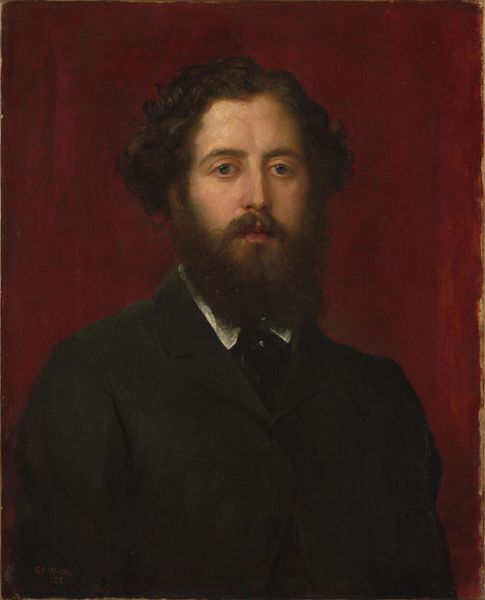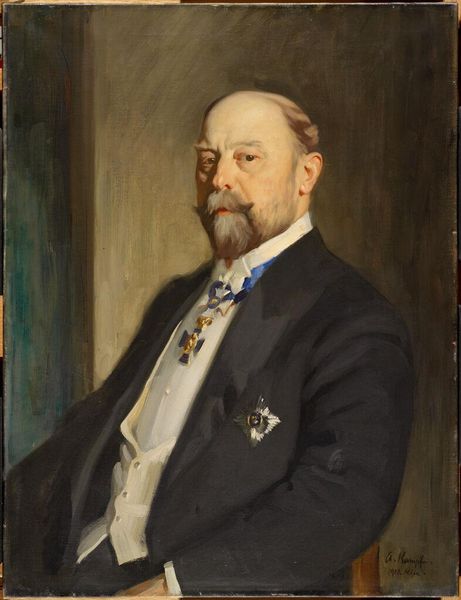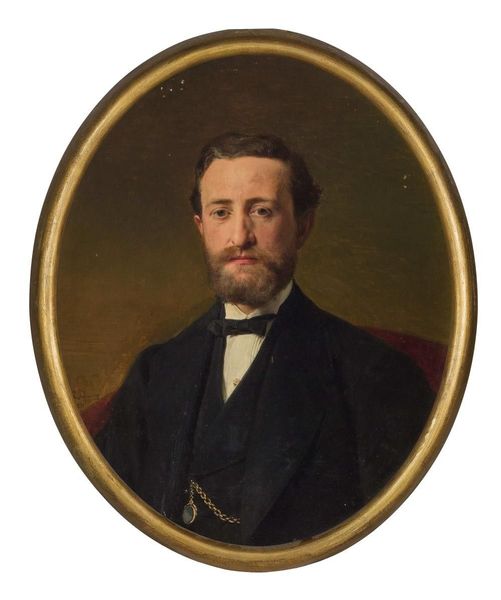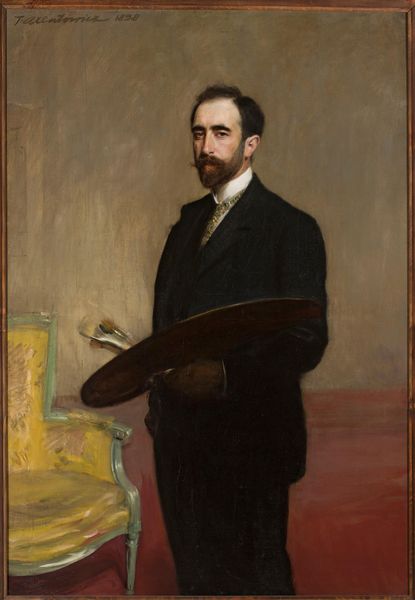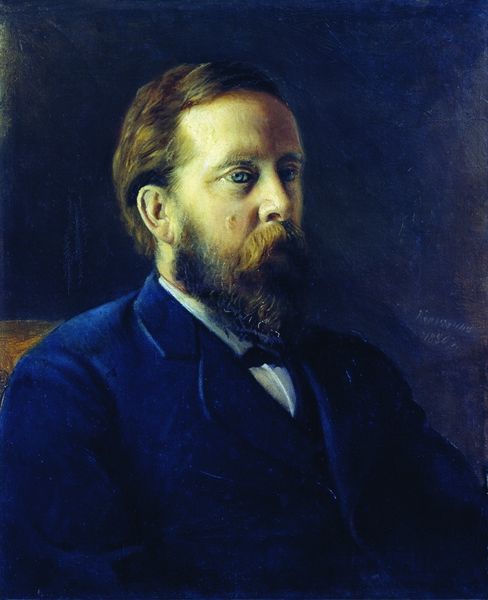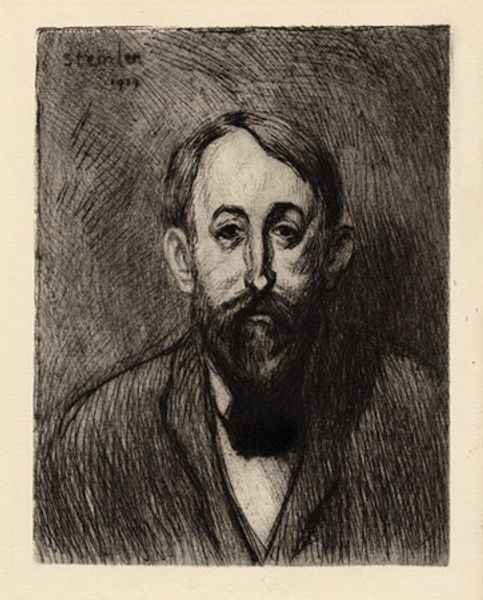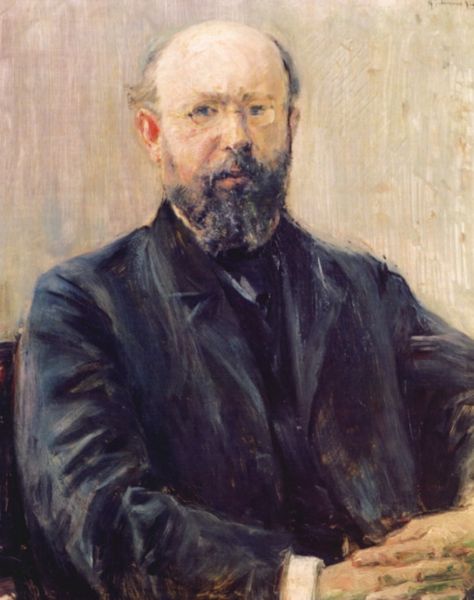
oil-paint, impasto
#
portrait
#
oil-paint
#
impasto
#
academic-art
#
realism
Copyright: Public domain
Curator: Here we have Carolus-Duran's "Portrait of Jules Claretie", painted in 1874. Duran's masterful application of oil paint is evident, particularly in the impasto handling of the beard. Editor: There’s something immediately captivating about the gaze; it feels both direct and subtly melancholic, which for me really brings out the sense of interiority often idealized in portraits. Curator: Absolutely, that gaze holds your attention. But consider also the textures Duran achieves. Notice how the smooth handling of the face contrasts with the rough, almost sculptural rendering of the beard. We see a negotiation between realism and a kind of heightened materiality. The rough and varied texture seems deliberate. Editor: And isn’t that negotiation also playing out in the broader cultural context? Claretie, a prominent figure in the Parisian literary and journalistic scene, being captured by Duran, who at the time, was attempting to situate himself within the artistic and political elite? Duran seems to be visually negotiating Claretie's image as both an intellectual and a man of his time, cementing both of their statuses through this exchange. Curator: Good point, this gets more complex when examining it from a materialist lens. The very pigment and application point to class distinctions. Duran, known for his almost lavish style, might be subtly reflecting Claretie’s position in the cultural hierarchy. Editor: Right, because portraiture during this era served almost as a visual mechanism, showcasing not just likeness but social status. Think of how the portraits functioned within salons and exhibitions, shaping public perception and reinforcing societal power dynamics. Claretie held several powerful positions during his life and played an integral role in the world of Parisian art and theater; seeing this portrait now grants valuable insights into the visual language of influence in late 19th century France. Curator: And by using such visible brushwork—that layering of paint—Duran not only depicts Claretie but also foregrounds his own artistic labor. It almost functions as a signature on top of a signature. Editor: It certainly invites layers of reflection, doesn't it? Examining not only the man represented but also the web of socio-political forces surrounding artist, patron, and audience. Curator: A truly insightful reminder of art’s place within larger networks of power and production. Editor: And hopefully, an engaging lens through which visitors can now engage with this compelling piece.
Comments
No comments
Be the first to comment and join the conversation on the ultimate creative platform.
